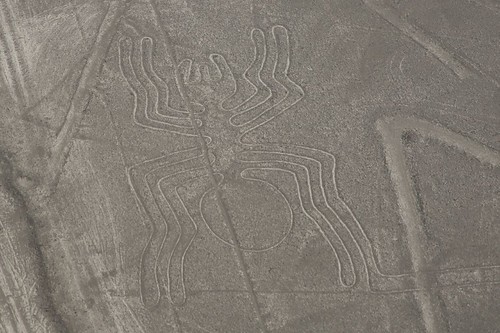The Spotted Cat was written in 1924 and was V.M. Straka’s 7th novel. It was originally written originally in Czech and then translated by F.X. Caldeira. At the time it was written, FXC was thought to be in New York City and publishing under Karst & Sons.
The Spotted Cat is referenced multiple times, on page xi of the Translator’s Note and Forward and also on pages 4, 55, and 90. Margin notes and research connections suggest that this novel was centered around the character of a priest who must call upon the Spider God, the god of rain, to save the village from destruction and the plague. Water was thought to purify disease and may be a connection to the plague mentioned in the footnote 6 on p.55. It is noteworthy that is story is not a true story of the Spider god, Anansi.
On p.xi, The Spotted Cat is mentioned in footnote 7, where FXC refers to it as one her “finest” translations, along with The Black Nineteen, Washington & Greene, The Night Palisades, Wineblood’s Mine, The Winged Shoes of Emydio Alves, and Coriolis.
Within in the margins, Jen is able to deduce that “FXC arrived in NYC between 1924-1929” and Eric shows skepticism in FXC’s ability to translate The Spotted Cat into multiple languages in his exchange with Jen.
Impressive for one person.
but a little hard to believe, right?
On p.4, Eric once again references The Spotted Cat in response to the line in Ship of Theseus which states, “This is a city of ancient and flawed geometries.” Eric responds with the note
CF Spotted Cat: Nazca Lines=“Ancient Geometries” (p.33)
On p.55, The Spotted Cat is once again mentioned. A footnote is connected to the line in Ship of Theseus stating “The unconscious boy convulses and coughs up a fine mist, a sunrise-pink spray; the sailors march on impassively.” The corresponding footnote 6 says “Careful readers will here recall the “Plague Morning” section of the priest’s monologue in Part IV of The Spotted Cat.”
Eric and Jen then made the following exchange.
…in which priest credits faith in spider god for the village’s survival. How is that relevant at all?
Another random code-footnote. Has to be
Despite their inability to see relevance, the description of the boy might draw a parallel to the plague and the conflict facing the village.
The references to The Spotted Cat on pages 4&55 are connected to the Nazca (Nasca) Lines in Peru that Eric mentions. On National Geographic, the Nazca Lines, or “geoglyphs” and “biomorphs,” are described as lines that stretch for miles across the Peruvian deserts and can only be seen from the sky. They were carved into the ground and can be seen due to the exposed yellow subsoil. It is thought they were created from AD 1-700 and in Johan Reinhard’s book The Nasca Lines: A New Perspective on their Origin and Meanings, he wrote “It seems likely that most of the lines did not point at anything on the geographical or celestial horizon, but rather led to places where rituals were performed to obtain water and fertility of crops.”
These lines range from straight and geometric lines to animal and plant designs. One of the carvings found, was a large spider, which was believed to be a sign of rain.
In The Spotted Cat, there is a priest that prays to the Spider God, and bringing rain to a desert village would indeed aid in it’s survival.
There was also a theory in the Translator’s Note that one occult origin for the identity of VMS was “an ancient Nazca king, originally from a distant planet.” While this is highly unlikely, it is possible to see where these connections were drawn from with knowledge of The Spotted Cat and the Nazca lines and their possible alien origin.
The Spotted Cat is also referenced quickly on p.90 where Jen quickly mentions (I was reading The Spotted Cat-I put it away, just in case. Didn’t want to attract notice.) in reference to Moody and Ilsa entering Pronghorn Java.
Back to Works By

